100 Ways to Improve Your Home’s Energy Efficiency
Improving the energy efficiency of your home is one of the best ways to save money, live more comfortably, and reduce your carbon footprint. But, many homeowners never get to enjoy these benefits because they aren’t sure where to start, so they give up on going green. Fortunately, it’s easier than ever to make your home more energy efficient. Here are 100 ways:
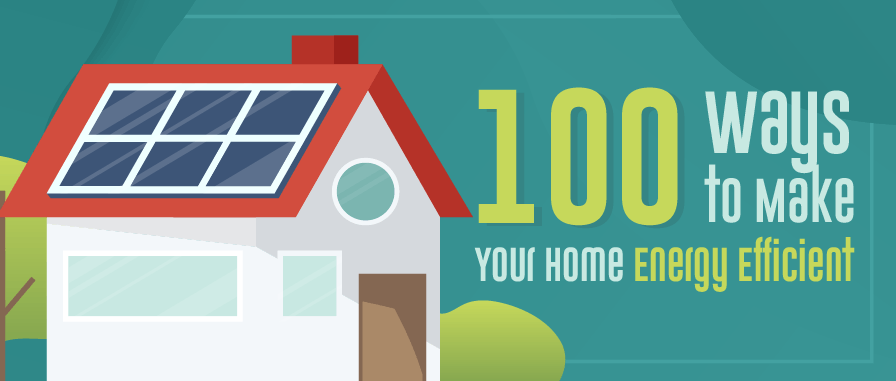
Improving Energy Efficiency in Your Bathroom
1. Install Low Flow Showerheads
Low flow showerheads can reduce the amount of water used in your shower by 25-60%. The best part? These fixtures are inexpensive, so you don’t need to spend a lot of money to start saving.
2. Purchase An Energy Efficient Toilet
Toilets use more water than any other appliance in your home, and the older the toilet, the more water it wastes. Upgrading to an energy efficient toilet can conserve countless gallons of water every year, which adds up to about $50 in annual savings!
3. Shorten Your Showers
The average shower lasts for about 8 minutes, but the Environmental Protection Agency (EPA) recommends cutting this time down to about 5 minutes to improve the energy efficiency of your home.
4. Repair Leaks
A leaky faucet can waste thousands of gallons of water every year. If you hear the slow drip of water in your bathroom, take the time to locate and fix this leak to conserve water.
How to Make Your Doors Efficient
5. Replace Outdated Doors
Newer doors provide more insulation than older models, so if your doors have not been replaced in decades, now is the time make a change. Choose an energy efficient door that is designed for your climate to save as much energy as possible.
6. Cover Glass Doors With Drapes
Heat enters your home through the glass in exterior doors, raising the temperature inside your home and forcing your cooling system to work harder to reach a comfortable temperature. Keep this heat out of your home by covering the glass on your exterior doors with drapes.
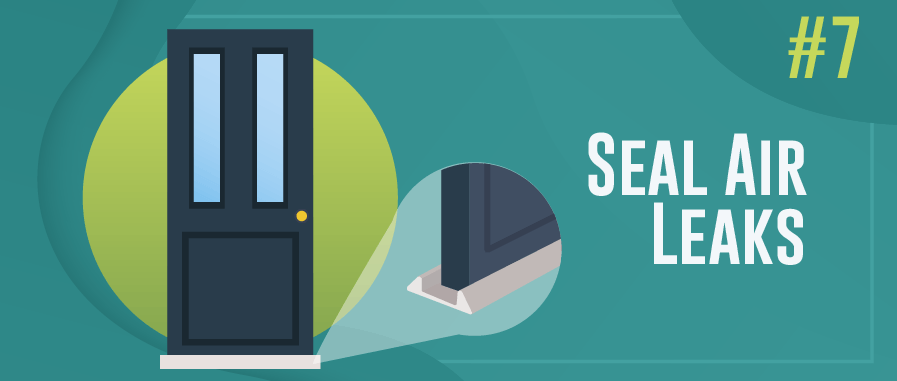
7. Seal Air Leaks
Air from inside your home can escape through the small openings around the perimeter of your doors. These leaks leave your heating and cooling system with no other choice but to go into overdrive to keep your home cool in the summer and warm in the winter. To prevent this energy loss, apply weatherstripping around your exterior doors.
8. Check the Door Frames
Is your door squeaking or sticking in place when it is opening or closing? This is a sign that the door has shifted since it was first installed. Adjust the door within the door frame to ensure that it is in its proper place. Doing this will prevent air from leaking out of the openings that form when the door is not aligned properly.
How to Make Your Windows Energy Efficient
9. Switch to Energy Star Windows
Invest in Energy Star windows, which are designed to block the sun’s rays and prevent the transfer of heat. By installing these windows, it’s estimated that homeowners can reduce their utility bills by about 12%.
10. Add A Window Film
Apply a window film, which is a thin layer of plastic, to the outside of your windows. This film will block heat before it makes it inside your home, so your air conditioner will not have to work nearly as hard to keep you cool.
11. Apply Caulking
Seal air leaks around your windows by applying a fresh layer of caulk. Caulking is a quick, easy, and inexpensive project that can be completed without the help of a professional.
12. Upgrade the Window Treatments
Hang drapes on the windows in your home that receive the most sunlight. Choose drapes that are lined, and make sure that they are measured correctly so they hang from the ceiling to the floor. These drapes will block heat in the summer and prevent heat loss in the winter, thus making your home more energy efficient.
How to Make Your Tech More Energy Efficient
13. Use A Power Strip
Plug devices into a power strip and turn the entire strip off when the devices are not in use. This will cut off the supply of electricity and prevent the devices from continuing to consume energy when they are not being used.
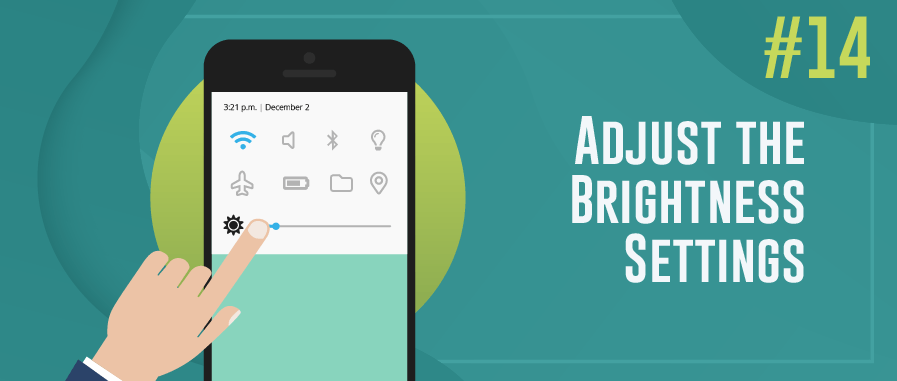
14. Adjust the Brightness Settings
The brighter the screen is on an electronic device, the more energy it is using to maintain its brightness. Conserve as much energy as possible by adjusting the brightness settings so the screen is somewhat dim.
15. Let Your Computer Hibernate
It takes a lot of energy to present a screensaver display when a computer is not in use. Let your computer go into hibernation when you’re not around instead so it does not waste as much energy.
16. Don’t Overcharge
Remove your cell phone from its charger once its battery has reached 100%. Otherwise, the charger will continue to consume energy even though the phone is fully charged, so the energy goes to waste.
17. Buy An Energy Star Computer
Energy Star computers perform all the same functions as standard computers, yet they use up to 60% less energy. If you are interested in buying a new desktop or laptop, look for the Energy Star sticker.
How to Improve the Efficiency of Your Appliances
Energy efficient appliances are easy to find and do make a positive impact on the environment (not to mention your utility bill). If you can’t afford to upgrade a large appliance right away, here are a few tips to ensure they’re running as efficiently as possible:
18. Unplug Appliances
If an appliance is plugged in, it will consume energy even when it’s not being used. To save energy, unplug all of the appliances that are rarely used. For example, if you never use your blender, there’s no reason to leave it plugged in sitting on your kitchen counter.
19. Clean Appliances Regularly
Dirty appliances consume more energy than clean ones, which is why it’s so important to clean the appliances in your home on a regular basis. Removing the dust, dirt, and debris from the inside and outside of appliances can drastically improve your home’s energy efficiency.
20. Adjust the Temperature Settings
Adjusting the temperature by a few degrees makes refrigerators, freezers, and washers more energy efficient. Plus, it’s such a minor change that it will not affect the way the appliance performs.
21. Keep the Oven Door Closed
Heat escapes every time the oven door is opened, which forces the oven to work harder to keep the inside at a certain temperature. Prevent this problem by keeping the oven door closed while baking so no energy is wasted.
22. Keep A Lid on Pots and Pans
Heat rises, so putting lids on pots and pans can trap the heat so it does not escape. If you forget to use a lid, the stove will consume more energy to cook your food.
23. Choose the Right Burner
Energy is wasted whenever a burner is used that is much bigger than the pot or pan on it. To save energy, use a burner that is closest in size to the pot or pan you are using to cook.
24. Turn the Oven Off Early
Get in the habit of turning the oven off a few minutes early every time you are baking. Don’t remove the food early–simply turn the oven off and let the heat that is trapped inside the oven finish baking your food.
Energy Efficiency in the Attic
25. Add Insulation
Heat rises through your home and escapes through the attic. Keep hot air inside your home in the winter by insulating the attic to trap heat inside.
26. Look For Air Leaks
Inspect the areas around the windows, pipes, and ducts in your attic to look for air leaks. If you spot any air leaks, seal them by applying a fresh layer of caulk.
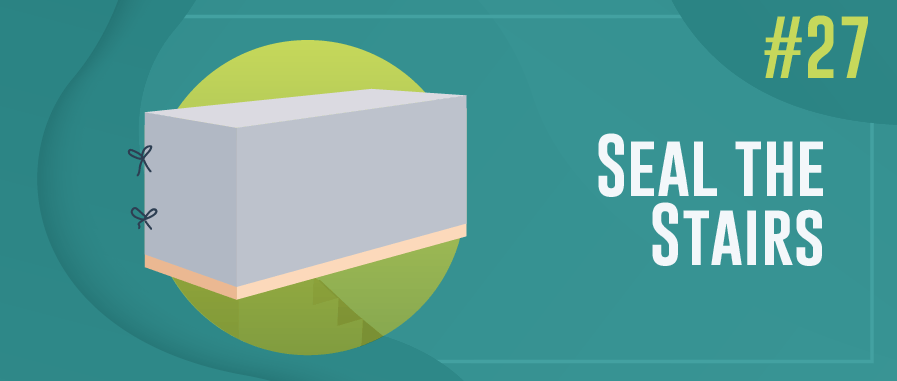
27. Seal the Stairs
Do you have stairs leading up to your attic? The stairs and the attic door should be sealed with an attic cover box to prevent air leaks and improve the attic’s overall energy efficiency.
28. Install An Attic Fan
Attic fans can cool hot attics by pushing hot air outside and drawing cool air inside, but they only work if your home has the right type of vents. Talk to a professional to see if an attic fan will work in your home.
Energy Efficiency in the Garage
29. Get Rid of Old Appliances
Many people have old appliances in their garage that they never use. Get rid of these appliances so they no longer waste energy.
30. Insulate the Garage Door
Reduce your home’s energy usage by applying insulation to the garage door. You can either purchase an insulation kit or install a brand new garage door with built-in insulation.
31. Seal Cracks in the Garage Floor
Cold air can sneak into your garage through small cracks in the floor. Don’t let this happen–hire a professional to seal these cracks as soon as you spot them.
32. Switch to Energy Efficient Light Bulbs
Use energy efficient light bulbs to light the inside of your garage. Energy efficient bulbs do not consume nearly as much energy and do not need to be replaced as often either.
Energy Efficiency in the Garden
33. Change the Irrigation Schedule
Adjust the settings on your irrigation system so you are watering in the morning as opposed to the evening or afternoon. Less water will evaporate when you choose the morning, which means less water will be wasted.
34. Apply A Layer of Mulch
Put a fresh layer of mulch down in your garden. Mulch will slow down the evaporation of water from the soil, so your plants will get to absorb every drop available to them.
35. Flatten Steep Slopes
Plants on a steep slope will not have the chance to absorb water before it starts to run down the sloped area. As a result, they will require more water to flourish. Prevent this problem by flattening steep slopes.
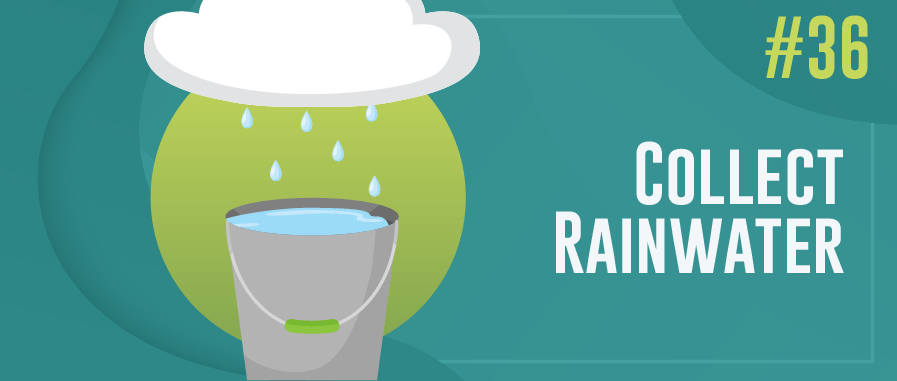
36. Collect Rainwater
Put a barrel in your garden so you can collect rainwater during the stormy season. Use this water to water your garden, give your dog a bath, or wash your car.
37. Group Plants Closely Together
If possible, group plants closely together instead of spreading them out across your yard. It’s easier for an irrigation system to water plants that are close together, so your sprinkler system will not need as much water to hydrate your plants.
Energy Efficient Lighting
38. Embrace Natural Light
Stop relying solely on artificial lighting–open the curtains and let the natural light from the sun stream into your home instead.
39. Switch to Energy Efficient Light Bulbs
Energy efficient light bulbs use up to 80% less energy than traditional bulbs. Switch the bulbs in your home and you should see a big difference on your next utility bill.
40. Install Dimmers
Install dimmer switches in your home so you can adjust the amount of light emitted from the bulbs. Using a slightly dimmer light will reduce the energy usage in your home.
41. Choose A Low Wattage Bulb
Go with a low wattage bulb instead of choosing the brightest bulb available. Selecting a bulb with a slightly lower wattage will not make much of a difference in terms of brightness, but it will make your home more energy efficient.
42. Automate Outside Lights
Install outside lights that automatically turn on and off at certain times of the day. This way, you will never have to remember to turn off the outside lights when you wake up in the morning.
43. Use Task Lighting
Task lighting, such as lamps or spot lights, uses less energy than overhead lighting. If you’re working in one area of a room, use a task light instead of turning the overhead light on.
Energy Efficiency and Your Home’s Exterior
44. Use Solar Reflective Paints
Apply a fresh layer of solar reflective paint the next time your porch or covered patio needs a touch-up. Solar reflective paints reflect the sun’s heat instead of absorbing it, which means your home will not get as hot during the summer.
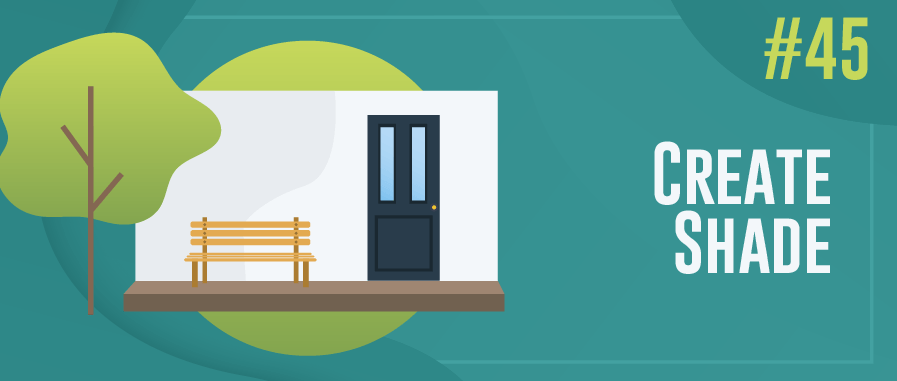
45. Create Shade
Work with a landscaper to plant trees close to your home. As the trees grow bigger, they will provide more shade, which will keep your home cool without using energy.
46. Keep the Door Closed
Don’t let the cool or warm air inside your home escape–keep doors to the outside closed at all times unless you are traveling in or out of it.
How to Make Your Roof Energy Efficient
47. Choose Light Colored Roofing Materials
Dark colored roofs absorb heat, which passes into your home, whereas light colored materials do not. For this reason, it’s best to choose light colored roofing materials to improve the energy efficiency of your home.
48. Apply A Cool Roof Coating
If you are not in need of a new roof, consider applying a cool roof coating to your existing roof. Cool roof coatings are designed to reflect sunlight to minimize the amount of heat that travels into your home.
49. Make Necessary Repairs
Broken, missing, or loose shingles create openings in your roof so the outside air can easily get into your home. Keep the outside air out–and give your heating and cooling system a break–by making necessary roofing repairs as quickly as possible.
50. Add Insulation From Below
Make it harder for the outside air to travel through your roof by adding insulation beneath it. Insulation will block heat in the summer and cold air in the winter so your home can easily maintain a comfortable temperature all year.
Improving the Efficiency of Your Washer & Dryer
51. Use the Moisture Sensor
Activate the moisture sensor on your dryer so the appliance will automatically turn off when the laundry is dry instead of waiting until the preset time is up.
52. Do Full Loads of Laundry
Washers use the same amount of energy on every load of laundry, regardless of its size. For this reason, it’s best to only do full loads of laundry instead of wasting energy on a small load.
53. Air Dry Clothes
If you’re not in a hurry to dry your clothes, try air drying them instead of putting them in the dryer. It may take longer, but this method will save a significant amount of energy.
54. Wash Clothes in Cold Water
About 90% of the energy consumed by the washer is used to heat water. Make the switch to cold water so you can reduce the amount of energy that is used to clean your clothes.
55. Clean the Dryer Duct Regularly
It’s hard for air to flow through the dryer if the duct is dirty, so the dryer will have to use more energy in order to dry your clothes. Get in the habit of cleaning the dryer duct on a regular basis so you can maximize its efficiency.
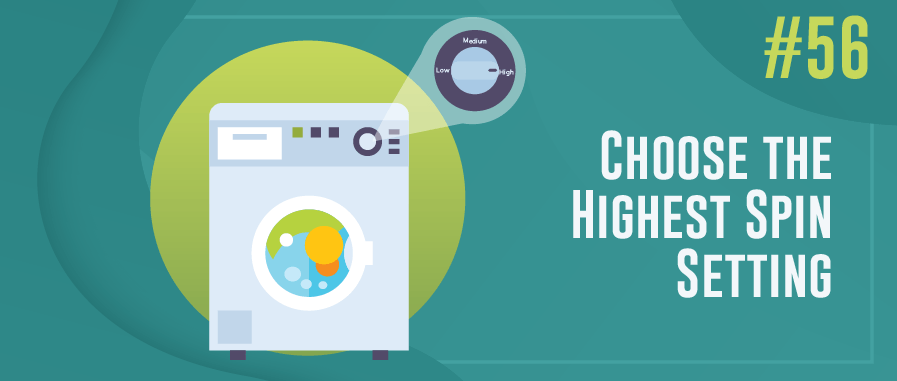
56. Choose the Highest Spin Setting
The washer will extract more water from the laundry when it’s set on the highest spin setting. As a result, the dryer will not have to use as much energy to dry your clothes.
57. Buy High Efficiency Detergent
High efficiency detergents do not produce as many suds, so the washer will not have to rinse the clothes multiple times in order to completely clean them.
Improving the Efficiency of Your Refrigerator
58. Keep the Door Closed
Don’t open the refrigerator door unless you know exactly what you’re looking for inside. The longer the door is open, the more energy the refrigerator must use to keep the inside cool.
59. Let Air Flow Around the Appliances
Keep the area around and on top of the refrigerator as clean as possible to promote air flow. These areas play an important role in the refrigerator’s cooling process, so keep them clear to reduce the amount of energy used by this appliance.
60. Look For the Right Size
If you do not need a large refrigerator, do not purchase one. Bigger appliances use more energy than smaller ones, so choosing the right size can save energy.
61. Choose A Top-Mount Refrigerator
Top-mount refrigerators/freezers use about 30% less energy than side-by-side models. If you’re looking for a new refrigerator, choose this style to start saving.
62. Replace the Seal
The seal around the refrigerator door will start to weaken with repeated use, so the door will not close as tightly. When this happens, cool air could escape through the seal. Prevent this problem by replacing the seal whenever you start to notice that it is losing suction.
Energy Efficiency in the Bedroom
63. Turn the Ceiling Fan On
Let the ceiling fan keep you cool at night so you do not need to rely on the air conditioner at all hours of the day.
64. Turn the TV Off At Night
Fight the urge to fall asleep with your TV on at night. The TV will continue to consume energy even after you’ve fallen asleep, so it’s best to turn it off or use the sleep mode so it turns off on its own.
65. Grab An Extra Blanket
Sleep with an extra blanket in the winter instead of relying on your heater to keep you warm. You can keep the heater on, but at a lower temperature so it doesn’t consume as much energy.

66. Close the Curtains
Closing the curtains will not only provide more privacy, but it will also keep you cooler in the summer and warmer in the winter.
Have A Pool? It Can Be Energy Efficient, Too.
67. Use An Appropriately Sized Pool Pump
Larger pumps use more energy than smaller ones, so do not purchase a large pump unless it’s absolutely necessary to do so.
68. Turn the Heater Off
If no one is using the pool, turn the heater off to conserve energy. It’s best to do this when you leave for vacation or during the winter, since swimming is not popular during this season.
69. Install A Solar Heater
Traditional heaters are powered by electricity, but solar heaters are powered by energy from the sun. Switch to a solar heater to make your pool more energy efficient.
70. Cover the Pool
Prevent evaporation by covering the pool when it’s not in use. If the water does not evaporate quickly, there’s no need to waste water by filling the pool.
71. Create A Windbreak
Hedges or bushes that are planted close to the pool can prevent wind from reaching the water. This will prevent evaporation and ensure that the cold wind does not lower the temperature of the pool, which would force the heater to work harder.
72. Choose Dark Colored Materials
Light colored materials are popular, but dark colored materials are more energy efficient. Dark materials will absorb more heat from the sun, which means your pool will not need to use the electric heater as often.
Improving the Efficiency of Your Dishwasher
73. Skip the Pre-Rinse
Pre-rinsing the dishes is a huge waste of both time and energy. Skip this step and put your dishes directly in the dishwasher.
74. Fill the Dishwasher
Don’t hit “start” until the dishwasher is completely full. The dishwasher will use the same amount of energy on a smaller load than it would on a full one, so wait until it’s full to save energy.
75. Load the Dishes Carefully
Pay close attention to the way the dishes are loaded into the dishwasher. If they are placed incorrectly, the dishwasher may not be able to properly clean them with just one rinse.
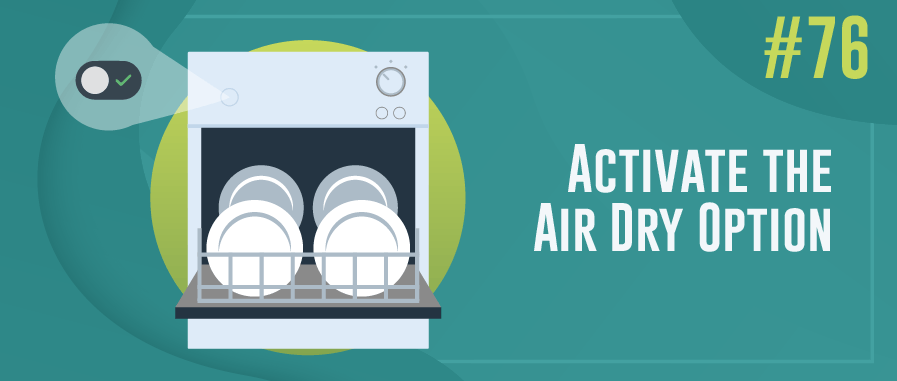
76. Activate the Air Dry Option
Give your dishwasher a break by activating the air dry option. Your dishwasher won’t need to waste energy on drying your dishes as long as this feature is turned on.
77. Choose A Strategic Location in the Kitchen
Is your dishwasher located next to the refrigerator? If so, the heat from the dishwasher can make it harder for the refrigerator to do its job. Separate these appliances to maximize energy efficiency.
78. Wash the Dishes At Night
The demand for energy usually drops at night, so this is the best time to run the dishwasher. Preset the appliance to automatically turn on during the night so you don’t have to remember to press “start” before bed.
Better Insulation, Better Energy Efficiency
79. Add More Insulation
The amount of insulation that you need will depend on a number of factors, including your city’s climate. Work with a professional to determine if you need more insulation, and if you do, add it to improve the energy efficiency of your home.
80. Choose the Right Materials
Some insulation materials are more effective than others. Make sure your home is properly insulated by asking a professional to advise you regarding your insulation material choices.
81. Start With the Exterior Walls
There are a lot of walls in your home, but some of them will not necessarily need insulation. It’s best to start insulating the exterior walls first since they play the biggest role in making your home energy efficient and maintaining a comfortable temperature inside.
How to Improve Your Ventilation
82. Change the Filters Regularly
Dirty filters make it harder for the ventilation system to work. Make sure you are changing the filters regularly so you are not forcing the system to waste energy.
83. Assess the Need For Ventilators
Talk to a professional to determine if you really need a ventilation system in your home. Depending on the climate, it’s possible that you can use natural ventilation instead.
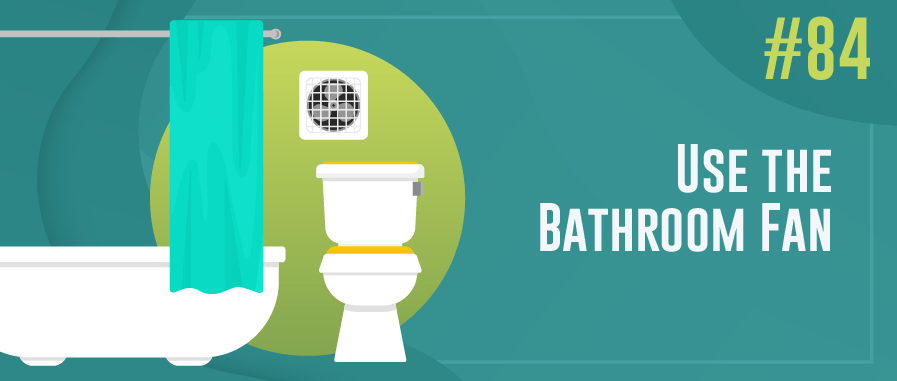
84. Use the Bathroom Fan
Turn the bathroom fan on after a shower to suck up the heat and moisture in the room. Doing this will make it easier for the main ventilation system in your home to operate.
85. Keep Heat Out Of Your Home
The ventilation system will not have to work as hard if there is less heat from outside coming into your home. Keep heat out by sealing air leaks around doors and windows using weatherstripping or caulking.
Improving the Efficiency of Your Water Heater
86. Upgrade the Water Heater
Replace your existing water heater with an energy efficient model, which is designed to use as little energy as possible.
87. Lower the Temperature
Change the temperature on your hot water heater to 120 degrees Fahrenheit. Dialing the temperature back will not affect your hot water supply, but it will reduce your home’s energy usage.
88. Insulate the Water Heater
Reduce standby heating losses by insulating the hot water heater. Insulation kits can be purchased at local hardware stores and applied without the help of a professional.
89. Install Heat Traps
Ask a professional to help with the installation of heat traps, which will reduce the loss of heat and make it easier for the appliance to produce hot water.
90. Add Insulation to the Pipes
Insulating the first few feet of the hot and cold water pipes connected to your hot water heater can also drastically reduce energy consumption.
91. Set A Timer
Use the timer on your hot water heater to shut off your hot water at certain times. This way, you will not waste energy on heating water while you’re at work or asleep.
Heating and Cooling Efficiency
Heating and cooling can account for up to half of your energy bill, which means improving the energy efficiency ratio of your HVAC system will go a long way toward lowering your monthly bills!
92. Install A Programmable Thermostat
Use a programmable thermostat to adjust the temperature in your home during the hours you are at work or asleep. This device will make it easier for you to reduce your heating and cooling costs.
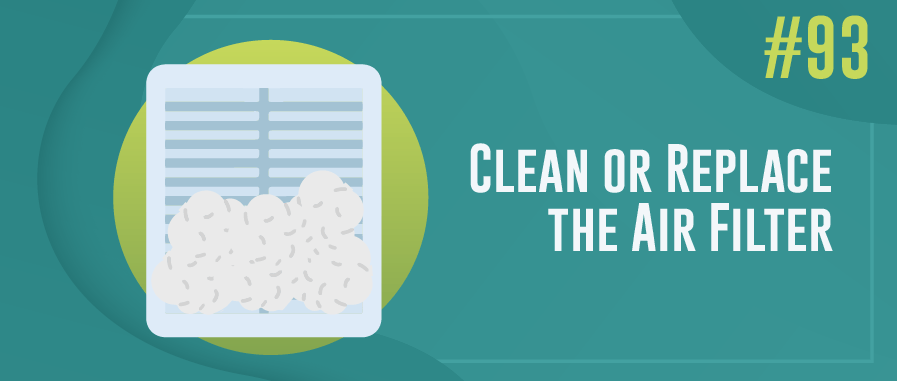
93. Clean or Replace the Air Filter
Heating and cooling systems require more energy to keep your home comfortable if the air filters are dirty. Set reminders for yourself to clean these filters regularly so your system does not use as much energy.
94. Seal Leaks in the Air Ducts
Hire a professional to seal the air leaks in your air ducts to reduce the loss of hot or cool air coming from your heating and cooling system.
95. Lubricate the System’s Moving Parts
A lack of lubrication will cause friction, which will increase the amount of electricity that the heating and cooling system uses. To reduce energy usage, lubricate the system’s moving parts regularly.
Energy Efficiency in the Kitchen
96. Prepare Meals With Glass or Ceramic Dishes
Are you baking in the oven? If so, put the food in a glass or ceramic dish. The food will cook just as fast, but at a lower temperature, so the oven will not need to use as much energy.
97. Turn the Ice Maker Off
The ice maker inside your freezes uses a lot of energy, and chances are you probably aren’t using most of the ice it is producing. Reduce your freezer’s energy consumption by about 20% by turning the ice maker off.
98. Prepare More “Cool” Meals
Try to avoid using the oven, stove, and other appliances in your kitchen on a daily basis. Instead, make “cool meals” such as salads or sandwiches, which can be prepared without these appliances.
99. Avoid Using the Oven
Toasters, convection ovens, and microwaves are all more energy efficient than ovens. For this reason, it’s best to avoid using the oven if you want to improve the energy efficiency of your home.
100. Install Low Flow Faucets
Purchase inexpensive low flow faucets for your kitchen sinks. Making this switch can help homeowners reduce their annual water usage by up to 60%.
There are hundreds of other ways to save energy in your home, so think of this list as just the beginning. Start working your way through this list so you can see the amount of energy your family is capable of conserving when you make an effort to live a greener lifestyle!
See other guides by Benefyd:
- 100 Ways to Save Energy
- 50 Tips to Cut Your Electric Bill in Half
- Let It Snow! 50 Tips to Protect Your Home From Winter Weather
- 50 MORE Ways to Save Energy! (Infographic)


